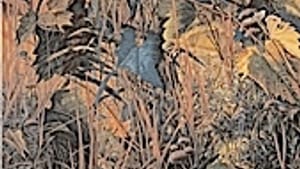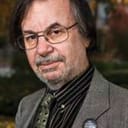Stay in the Loop
BSR publishes on a weekly schedule, with an email newsletter every Wednesday and Thursday morning. There’s no paywall, and subscribing is always free.
Naoto Nakagawa paintings in New York

The artist as interrogator
ROBERT ZALLER
The art of the Japanese masters has proved immensely influential and fructifying for Western art over the past century and a half, but the Japanese-American painter Naoto Nakagawa, while remaining fully committed to his birth tradition, has incorporated his adopted culture in a subtle, challenging and often surprising fusion of East and West. The results are currently on display at two New York galleries, Chelsea’s White Box and, in Tribeca, at Ethan Cohen Fine Arts.
The work at the White Box covers Nakagawa’s early years in New York, from 1965 to 1975. On the surface, these mostly large, hard-edge canvases— visually aggressive, sexually charged and surreally violent— seem not only to have assimilated the idiom of James Rosenquist and other reigning Pop Mannerists, but to push at emotional and erotic frontiers only hinted at by them. They’re at once elegant and disturbing, with their broken hammers, shattered mirrors, and fettered scissors, displaying an astonishing technical command in the service of a provocative, almost obsessive symbology. Ear (1970) brings the influence of Dali to the surface, but the reference is no mere quotation, and the eidos is far more direct: If these are dream-images, they are more like a waking nightmare than anything in the Spanish master.
A penis from a scissors blade
All this seems hardly Japanese, until one reflects more closely on the subject matter of these works. Four Corners, Timetable and Anatomy of a Timepiece, all from 1971, feature enlarged mirrors and pocket watches being pierced, shattered and kindled by a variety of objects that lie within or athwart the picture plane: sharpened pencils and protractors; plunging black umbrellas; a wayward bar stool; a huge, red-toothed comb; flaming matches.
Suddenly, memory coalesces the core image: the burnt timepiece, its hands forever frozen, that has come to symbolize the destruction of Hiroshima by the world’s first atomic bomb. With that, the sense of menace and rage— shocking, exhilarating, and fiercely controlled— that pervades the show comes into focus: the blunted scissors; the tied paintbrush (Beginning of a Still Life); the penis that grows out of a scissors blade and the parrot beak that curves up from below to meet it (Icon). It’s not a political statement but, rather, an ontological one; for this, says Nakagawa, is the imperiled world we all live in now, victors and victims alike.
Like nothing in nature
In contrast, the recent paintings (2002-2007) at Ethan Cohen Gallery offer densely compacted “landscapes” that, while owing some provenance to Max Ernst, reflect the sinister turn our increasingly poisoned planet has taken, our alienated relation to it, and the fate we indissolubly share with it. With the exception of Ephemera (2007), none of these works offers any suggestion of clear space, and the patch of darkly uniform blue in the upper corner of Ephemera itself is no sky, but a breathless void. The superficially autumnal tints of the leaves that present themselves ominously to the viewer are glittery and false, like nothing in nature, and they proliferate without actually depending from the thin, reddish stalks whose paths intersect them.
The stalks themselves, in passages such as those in Forest of Eden and Thanatopsis, seem more like engorged, arterial threads bleeding through fantastic organs. Has nature itself, no longer “outer” to us, become indistinguishable from the self? The question is posed but, as in the Pop/Surreal masterworks of Nakagawa’s early period, not answered. What is clear, however, is that Nakagawa’s real interrogation is aimed at the viewer, and that what he demands of us is a fierce and sustained lucidity of our own, the ability to stake our ground before an oeuvre that, over more than four decades, has neither asked quarter nor given it.
ROBERT ZALLER
The art of the Japanese masters has proved immensely influential and fructifying for Western art over the past century and a half, but the Japanese-American painter Naoto Nakagawa, while remaining fully committed to his birth tradition, has incorporated his adopted culture in a subtle, challenging and often surprising fusion of East and West. The results are currently on display at two New York galleries, Chelsea’s White Box and, in Tribeca, at Ethan Cohen Fine Arts.
The work at the White Box covers Nakagawa’s early years in New York, from 1965 to 1975. On the surface, these mostly large, hard-edge canvases— visually aggressive, sexually charged and surreally violent— seem not only to have assimilated the idiom of James Rosenquist and other reigning Pop Mannerists, but to push at emotional and erotic frontiers only hinted at by them. They’re at once elegant and disturbing, with their broken hammers, shattered mirrors, and fettered scissors, displaying an astonishing technical command in the service of a provocative, almost obsessive symbology. Ear (1970) brings the influence of Dali to the surface, but the reference is no mere quotation, and the eidos is far more direct: If these are dream-images, they are more like a waking nightmare than anything in the Spanish master.
A penis from a scissors blade
All this seems hardly Japanese, until one reflects more closely on the subject matter of these works. Four Corners, Timetable and Anatomy of a Timepiece, all from 1971, feature enlarged mirrors and pocket watches being pierced, shattered and kindled by a variety of objects that lie within or athwart the picture plane: sharpened pencils and protractors; plunging black umbrellas; a wayward bar stool; a huge, red-toothed comb; flaming matches.
Suddenly, memory coalesces the core image: the burnt timepiece, its hands forever frozen, that has come to symbolize the destruction of Hiroshima by the world’s first atomic bomb. With that, the sense of menace and rage— shocking, exhilarating, and fiercely controlled— that pervades the show comes into focus: the blunted scissors; the tied paintbrush (Beginning of a Still Life); the penis that grows out of a scissors blade and the parrot beak that curves up from below to meet it (Icon). It’s not a political statement but, rather, an ontological one; for this, says Nakagawa, is the imperiled world we all live in now, victors and victims alike.
Like nothing in nature
In contrast, the recent paintings (2002-2007) at Ethan Cohen Gallery offer densely compacted “landscapes” that, while owing some provenance to Max Ernst, reflect the sinister turn our increasingly poisoned planet has taken, our alienated relation to it, and the fate we indissolubly share with it. With the exception of Ephemera (2007), none of these works offers any suggestion of clear space, and the patch of darkly uniform blue in the upper corner of Ephemera itself is no sky, but a breathless void. The superficially autumnal tints of the leaves that present themselves ominously to the viewer are glittery and false, like nothing in nature, and they proliferate without actually depending from the thin, reddish stalks whose paths intersect them.
The stalks themselves, in passages such as those in Forest of Eden and Thanatopsis, seem more like engorged, arterial threads bleeding through fantastic organs. Has nature itself, no longer “outer” to us, become indistinguishable from the self? The question is posed but, as in the Pop/Surreal masterworks of Nakagawa’s early period, not answered. What is clear, however, is that Nakagawa’s real interrogation is aimed at the viewer, and that what he demands of us is a fierce and sustained lucidity of our own, the ability to stake our ground before an oeuvre that, over more than four decades, has neither asked quarter nor given it.
Sign up for our newsletter
All of the week's new articles, all in one place. Sign up for the free weekly BSR newsletters, and don't miss a conversation.

 Robert Zaller
Robert Zaller